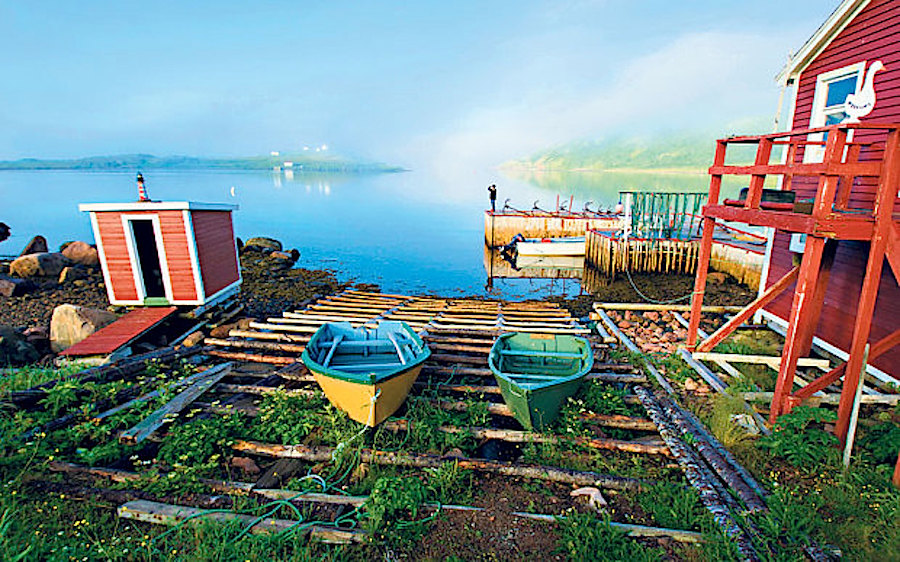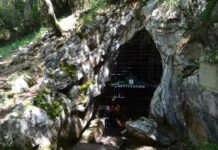This article was tranlated by Iustrans
Nigel Richardson’s job as journalist for The Telegraph is the envy of many of his colleagues, including ourselves. You only have to look at his list of newspaper articles to understand what we are talking about.
But for now we will only focus on his latest article which is devoted to (let’s admit it) one of our most cherished topics: the Basque whaling station in Red Bay. Considering the many articles we’ve written about Red Bay and its fascinating history, it is easy to understand why.
The Telegraph’s article is magnificent from the title, which reminded us of what we wrote when Red Bay became a UNESCO World Heritage Site.
With all due respect for Canadians, this Basque Whaling Station –located on what nowadays are Canadian shores- is an “unexpected gift”, as it was built with the effort and sacrifice of the Basques who traveled there for hundreds of years. Basques from all over the country, from Baiona to the western boundaries of the Basque Country at that time, were the authors of this period in Basque-Canadian history.
He continues the article by presenting his regular readers with the key information needed to understand the importance that Red Bay and the Basques themselves had during this extraordinary age of discoveries
We like the fact that he focused on a crucial element that was the first clue in determining how important this place was, despite it being forgotten in the background by other subsequent discoveries of great magnitude.
We´re referring to the remains of the tiles that the Basque whalers brought with them every spring, aimed to serve both as ballast for outbound trips and to repair the building’s roofs that suffered damages due to the harsh Canadian winters.
For the Basques, the tiles have an important symbolic meaning because of their role in the structure of the home (the ETXEA). For many centuries, the home was the Basques’ hub of life and social structure.
Non-baptized newborn babies were buried under the eaves of the country houses so they could be protected by their homes. In some parts of the Basque Country, this tradition was maintained until the nineteenth century.
The roofs and the tiles established the municipal boundaries. It’s not rare to find official documents with phrases like “the municipalities’ leaks reach up to this point“. Nowadays, every year the Mayor of Bermeo throws a tile in front of the Isle of Izaro to remind everyone that the island belongs to the municipality of Bermeo. While he throws the tiles he shouts for all to hear:
“Honaino heltzen tell Bermeoko itxuginak” (leaks from Bermeo reach up to this point)
What a beautiful ceremony it would be if, in a symbolic gesture of brotherhood with the inhabitants of Red Bay, the Basques in Canada (and the Basques in Saint Pierre et Miquelon) annually threw a tile into the bay after saying:
“Honaino heltzen tell Euskadiko itxuginak” (leaks from Euskadi reach up to this point)
Two final notes:
First, we’d love to have a picture with the flags of Canada and Euskadi waving together in Red Bay, as discussed in this article and in other articles we have already gathered.
Secondly, to Nigel Richardson, we’d like to clarify that the Basque sailors who came to these shores were from both sides of the Pyrenees: Iparrralde (currently under the administration of the French Republic) and Hegoalde (currently under the administration of the Kingdom of Spain).
In any case, this is a great article and an essential read.
The Telegraph – 1/5/2015 – Gran Bretaña
Red Bay: a corner of Canada that is forever Basque
The clues are there for anyone to see – the piles of red rubble on the beaches, the big bones scattered along one section of shoreline – but nobody in the Canadian fishing village of Red Bay had thought to put them together. “As kids we’d find these little pebbles on the beach, what we thought were pebbles,” Alice Moores, a local woman, told me. “We’d use them like chalk, to draw on the rocks.” Red Bay, on the coast of Labrador, is a classic “outport” of Atlantic Canada: clapboard houses perched on treeless headlands, shape-shifting icebergs out on the ocean – and a population of fewer than 300 since a dying fishing industry drove people to seek work elsewhere. For as long as anyone could remember, children had played with the red pebbles on the stony beaches. But it turned out that no one had remembered back far enough because they weren’t pebbles at all.
(Continue) (Automatic translation)
Last Updated on Dec 20, 2020 by About Basque Country
































